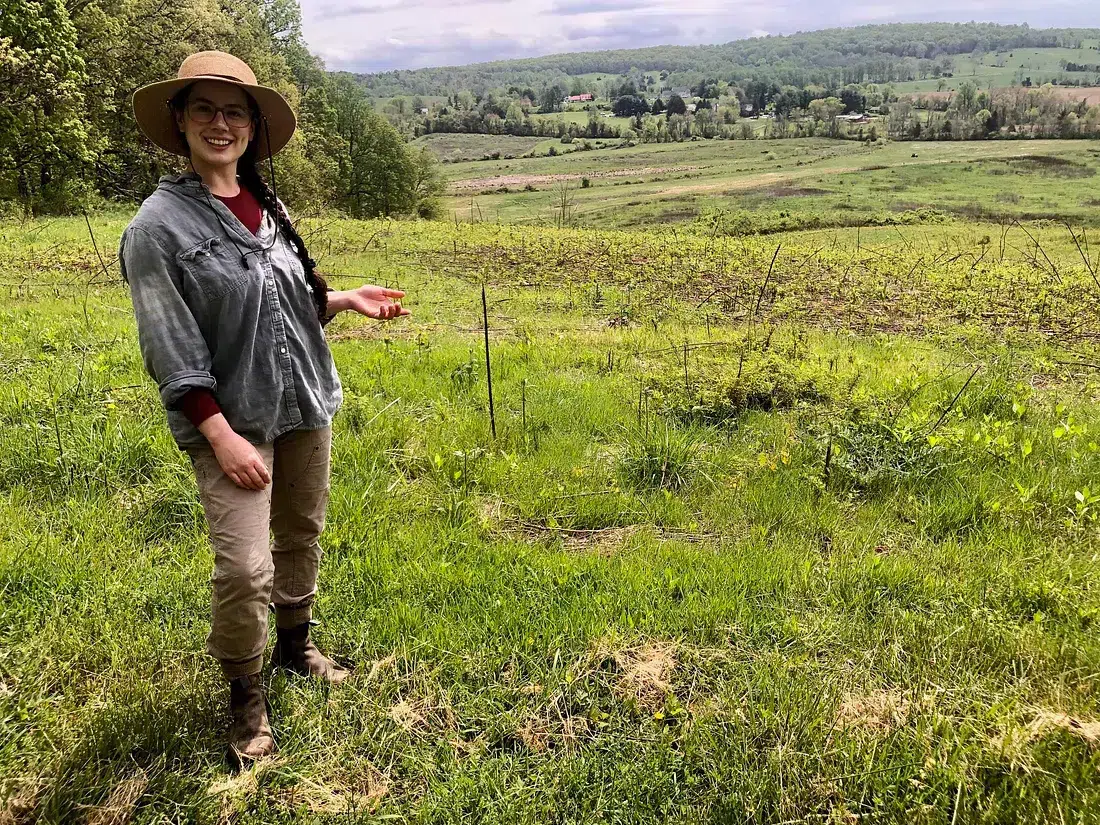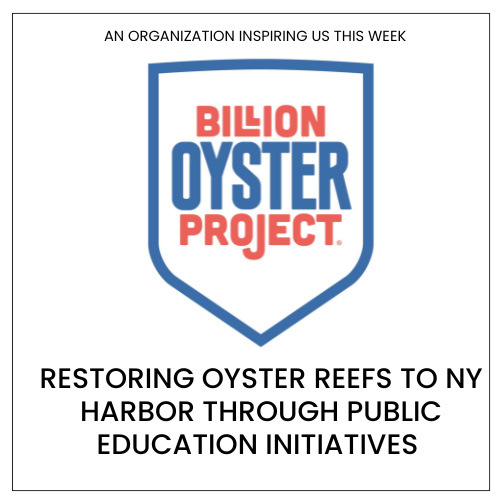Civic Science Observer
Virginia group encourages landowners to support local biodiversity

Virginia’s tourism motto is “Virginia is for Lovers.” But research groups seeking to persuade landowners to restore their properties to support local flora and fauna are guided by a modified motto: “Virginia is for LAND Lovers.”
Here’s why: It’s estimated that over 80 percent of land in Virginia is privately held. That means that landowners can have a significant role in creating habitats that support the growth of native plants and local wildlife.
“That’s a huge, huge amount of land,” said Kadiera Ingram, landowner outreach associate for The Clifton Institute, a nonprofit located on the outskirts of Warrenton, Virginia. The institute uses its 900-acre field station in Virginia’s Hunt Country to conduct research projects on ecology, biodiversity, and the restoration of local habitats. Clifton also has an education arm that seeks to inspire a deeper understanding and appreciation of nature.
Ingram’s role involves visiting local landowners’ properties for free, working with those landowners on their conservation interests and land management goals, and devising plans or offering advice on how they can restore their landscapes more naturally.
“We’ve got our state and federal agencies doing what they can on public land with the limited resources they have. But here—especially here in Northern Virginia—where folks have the land, have the motivation, and have the money, it’s really important to get folks to start adopting best land management practices,” Ingram said.
One of the research projects that Clifton is currently studying is looking at the best practices to restore former cow pastures and farmland into grasslands, keeping in mind that the grasslands could be Virginia’s Piedmont region, an area of river valleys between the Coastal Plain and the Blue Ridge Mountains, according to the Virginia Department of Wildlife Resources.
Clifton began this project in 2019, focusing on 110 acres of an overgrazed cow pasture on the property. Clifton hopes to use its research findings to help inform local landowners about how they can restore their land to support native plants and wildlife.
“There are a lot of people out here who have very large properties, and there’s a good amount of open pasture and grassland. So, that’s really our specialty: looking at grasslands,” Ingram said.
The evolving science of landscape restoration
Researchers in the U.S. Midwest have been studying grassland restoration for some time, but the science is relatively new for Virginia and Mid-Atlantic states, in part because Virginia is known more for its forests.
The science of landscape restoration “is still pretty young. A lot of really great questions are being asked and we’re finding out a lot of information,” Ingram said. But research findings in the Midwest aren’t always applicable to grasslands in the eastern U.S. or Virginia because of the environmental differences between the two regions.
The former cow pasture at Clifton has become an example of an early succession remnant prairie. Early successional and late successional habitats are typically grasslands or shrublands before they grow into woodlands and eventually forests.
The Virginia Department of Wildlife Resources defines early successional habitats as the plants “that develop in an area shortly after a disturbance. Succession is the process by which plant communities change in a certain area over time from an early stage of development until they reach a final mature form or ‘climax community.’” For much of Virginia, that final stage is the forest.

Clifton’s research on transitioning the former cow pasture to a native grassland involved these steps: First, using herbicides and repeated discing—which Clifton says is an organic alternative similar to plowing—to prepare the land. Once native plants were established, the land underwent mowing or prescribed burning. Clifton tested eight different combinations of land management methods to determine which set of methods enabled the best habitat for native plants and animals.
Executive director Bert Harris recently discussed Clifton’s findings with the Virginia Native Plant Society. Although fields with a history of intensive agriculture may never end up looking like remnant prairies, the findings will still be valuable for landowners and land managers, Harris said.
“You are probably never going to be able to recreate the remnant prairies by planting stuff in an agricultural field. These fields have been abused for decades. They’ve been plowed, and they have been transformed, probably permanently,” Harris said during the talk. “And so, it’s very important that we save the original remnants and manage them well because it’s going to be really hard to recreate them. But that does not mean it’s not worthwhile to do restoration. We’ve created a lot of pollinator habitat at Clifton, and a lot of landowners are creating excellent habitat.”

On a bright and warm Saturday morning in April, Ingram and I walked out to the field where the research has been taking place.
“We’re measuring plant diversity, like, what showed up. Are we getting more species, fewer species,” Ingram said. While Clifton is focusing its attention on plant species, it could turn its eye to insects and pollinators in the future.
“[We’re looking at] which species are coming in: If we’re getting a bunch of invasives, if we’re getting a rich diversity of native flowering plants.,” Ingram said. “The plants are at the basic trophic level, right? So if we’re doing a good job getting plants back and getting a nice, native, well-structured meadow, then everything else will do better—the birds, insects, and everything.”
What Clifton’s research means for local landowners
People who approach Clifton asking for help with land restoration have different goals, according to Ingram. Some want to do whatever it takes to support grassland birds and make a great habitat, while others might be seeking more of an aesthetic or they might have limited time and resources to work toward a full restoration.
Clifton works with all these landowners, Ingram said: “We find a way to bridge the gap and give them something that will benefit local native biodiversity while still giving achievable steps.” The group also provides a baseline set of recommendations or best management practices.
Clifton’s research is part of a broader initiative within Virginia and other Mid-Atlantic states to restore lands to a more natural habitat.
For instance, in neighboring Loudoun County, the Loudoun Wildlife Conservancy has partnered with the Audobon Society of Northern Virginia and others to create an initiative where volunteers visit property owners and managers “to become better stewards of nature in their own outdoor spaces.” The Wildlife Sanctuary Program initiative seeks to restore a site to its natural habitat and foster an appreciation for the native plants and wildlife that depend on that habitat.
All these programs seek to spread an interest in encouraging biodiversity on private property.
“These grasslands have come to support a lot of our native pollinators, bird species — a lot of our wildlife.” Restoring the grasslands ensures that the region doesn’t see a decline of the species that depend on this type of habitat, Ingram said.
by Joanna Marsh
Article also available on the Civic Science Times.
Joanna Marsh is a freelance writer and journalist based in Washington, D.C. For The Civic Science Observer, she reports on new developments across the citizen science landscape, covering both new research and on-the-ground practice. Her work highlights how local communities are engaging with scientists to contribute to ongoing scientific research and lessons being learned by the involved stakeholders.

-
Civic Science Observer2 weeks ago
What are the objectives of the Neurotech Justice Accelerator at Mass General Brigham?
-
Civic Science Observer2 months ago
New survey explores what people in South Africa expect of publicly visible scientists – why it matters
-
CivicSciTV International2 months ago
Aquatic ecologist & Scicomm In Practice Fellow, Fridolin Ubald Dossou-Sognon, shares his experience
-
Civic Science Observer2 months ago
Ecosystem building in action: Science Talk 2025 and the dynamic civic science conference landscape

















